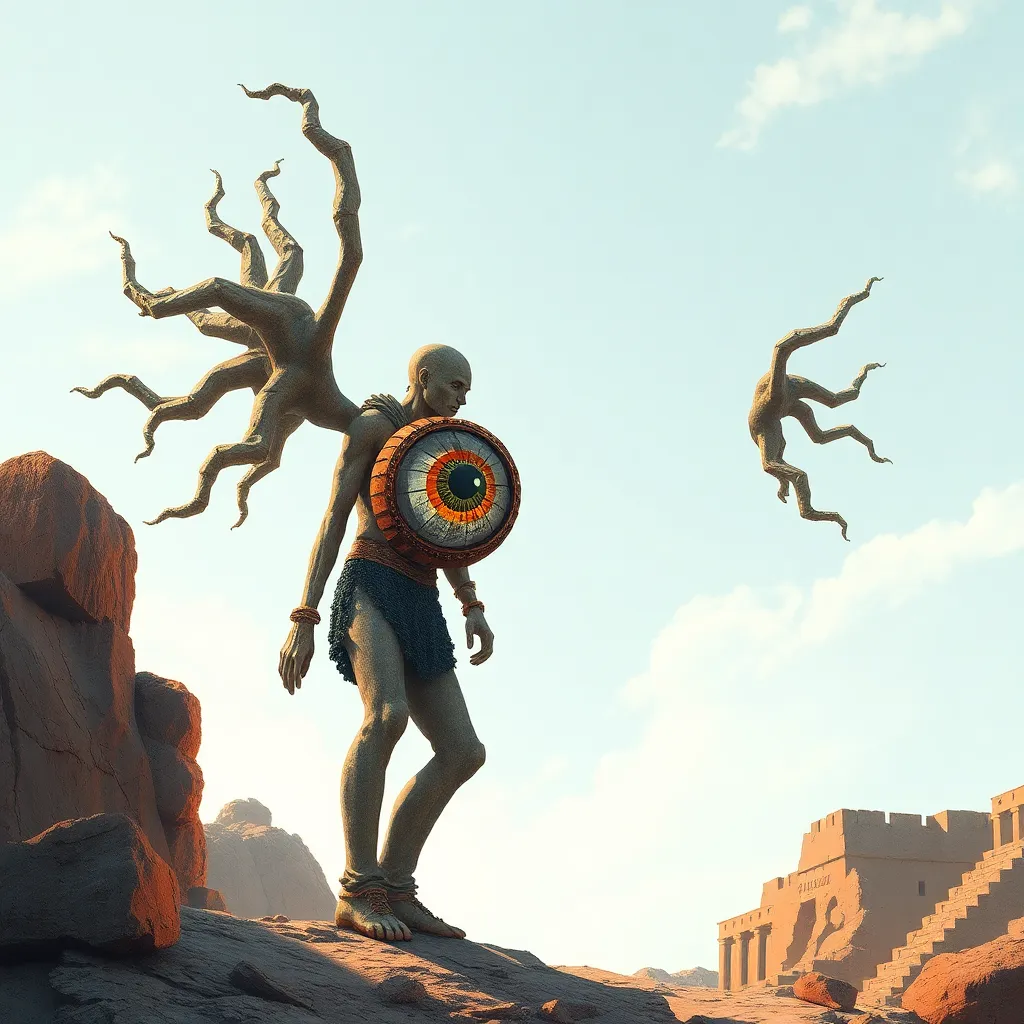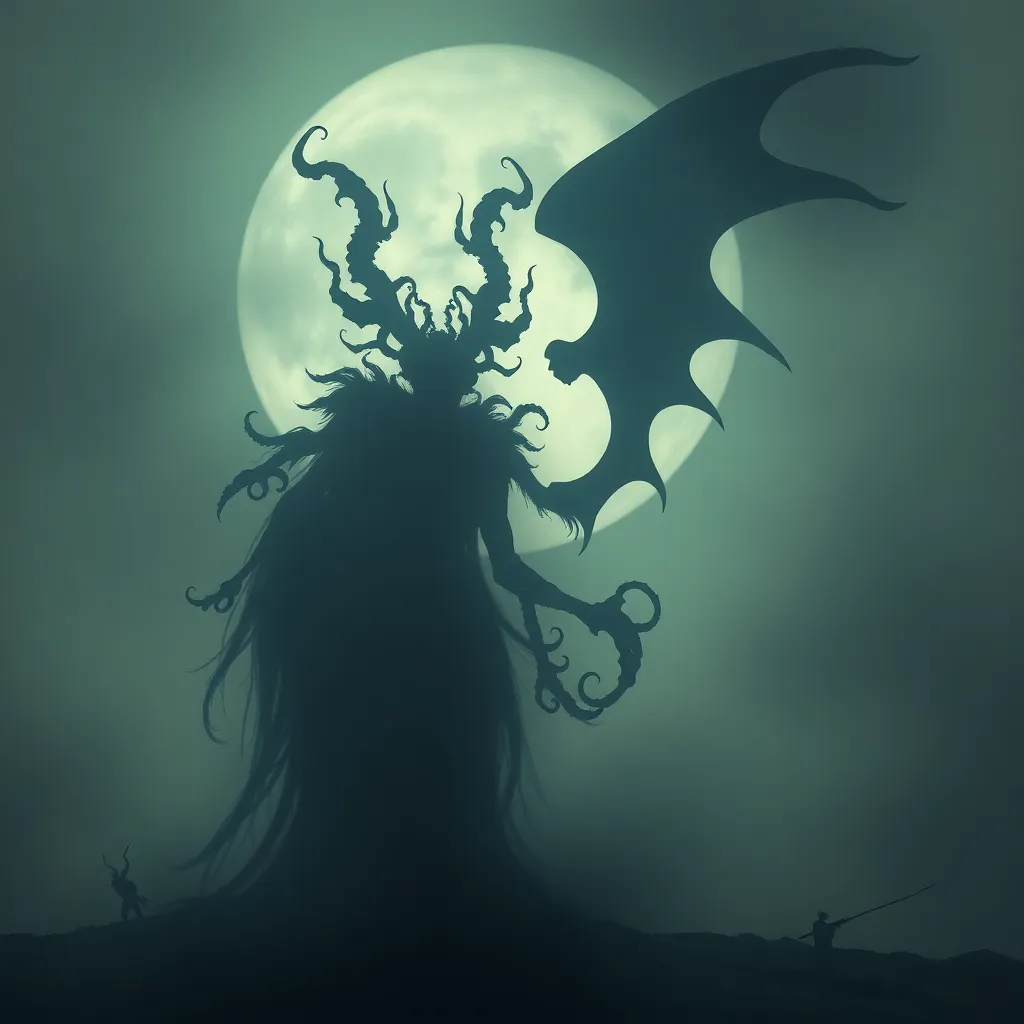The Cyclops in Roman Mythology: Examining the Role of the One-Eyed Giant in Roman Beliefs
I. Introduction
The Cyclopes, the one-eyed giants of ancient mythology, have fascinated audiences for centuries. These mythical beings are not only prominent figures in Greek mythology but also hold a significant place in Roman culture. The representation of Cyclopes in Roman beliefs reflects a blend of tradition, mythology, and cultural evolution, highlighting their importance in the ancient world. This article will explore the multifaceted role of the Cyclops in Roman mythology, examining their origins, characteristics, literary presence, and legacy in both ancient and modern contexts.
II. Origins of the Cyclops in Mythology
The origins of Cyclopean mythology can be traced back to ancient Greece, where Cyclopes were often depicted as brutish and formidable beings. In Greek mythology, they are typically associated with the god Hephaestus and are credited with crafting Zeus’s thunderbolts. However, the Roman interpretation of these creatures evolved over time, influenced by various cultural exchanges and adaptations.
A. Greek vs. Roman interpretations
In Greek mythology, Cyclopes are generally portrayed as solitary figures, living in remote areas and embodying the raw power of nature. Conversely, Roman interpretations often emphasize their role as constructors and craftsmen, highlighting their contributions to civilization. This shift reflects the Roman values of order and practicality, contrasting with the chaotic nature often associated with their Greek counterparts.
B. Historical context of Cyclops in ancient texts
The earliest known references to Cyclopes can be found in Homer’s “Odyssey,” where Odysseus encounters Polyphemus, the most famous Cyclops. Roman writers later adopted and adapted these tales, integrating them into their own literary canon.
C. Transition from Greek mythology to Roman beliefs
The transition of Cyclopean myths from Greece to Rome involved a complex interplay of cultural exchange. Roman authors, such as Virgil and Ovid, reinterpreted these myths to align with Roman ideals and traditions, creating a distinct version of Cyclopean lore that resonated with their audience.
III. Characteristics and Symbolism of the Cyclops
Cyclopes are characterized by their distinct physical attributes and rich symbolic meanings. Their one-eyed visage has led to various interpretations throughout history.
A. Physical attributes of the Cyclops
- Typically depicted as large, muscular beings
- Possess a single eye located in the center of their forehead
- Often shown with a rugged, wild appearance, symbolizing their connection to the untamed aspects of nature
B. Symbolic meanings associated with the Cyclops
The Cyclops embodies various symbolic meanings, including:
- Chaos: Representing the chaotic forces of nature that humanity must confront.
- Isolation: Their solitary nature mirrors the theme of alienation in human experience.
- Power: As formidable beings, they symbolize brute strength and the primal aspects of existence.
C. The Cyclops as a representation of chaos and nature
In Roman thought, the Cyclops can be seen as a representation of the chaotic and unpredictable forces of nature. Their existence serves as a reminder of humanity’s vulnerability in the face of nature’s raw power.
IV. The Cyclops in Roman Literature
The Cyclops has been immortalized in various literary works throughout Roman history. Their presence in these texts offers insights into how they were perceived and understood by Roman society.
A. Key literary works featuring Cyclopes
Some of the significant works that feature Cyclopes include:
- Virgil’s “Aeneid”
- Ovid’s “Metamorphoses”
- Later adaptations in Roman poetry and drama
B. Analysis of Cyclops’ portrayal in Virgil’s “Aeneid”
In the “Aeneid,” Virgil presents Cyclopes as both craftsmen and threats. This duality reflects the Roman appreciation for labor and construction, while also acknowledging the inherent dangers posed by untamed entities.
C. Comparison with Homer’s “Odyssey”
While Homer’s portrayal of Polyphemus emphasizes themes of cunning and survival, Virgil’s Cyclopes serve a more complex role, embodying both the destructive and constructive aspects of nature and human endeavor.
V. The Cyclops in Roman Art and Culture
The influence of Cyclopes extended beyond literature into the visual arts, where they were depicted in various forms.
A. Depictions in sculpture and pottery
Cyclopes have been depicted in Roman sculptures and pottery, often shown in scenes that highlight their strength and craftsmanship, such as forging weapons or assisting the gods.
B. Influence on Roman visual arts and architecture
The imagery of Cyclopes has influenced Roman architecture, particularly in the use of monumental structures that echo their strength and durability.
C. The Cyclops in theatrical performances
Cyclopes were also featured in Roman theater, where their stories were dramatized, drawing audiences into the world of myth and legend.
VI. The Cyclops and Roman Religion
The Cyclops played a role in the religious practices of ancient Rome, where their mythological significance intersected with spiritual beliefs.
A. Cyclops in Roman religious practices and beliefs
Some Roman religious practices incorporated Cyclopean imagery, emphasizing their connection to the divine and the natural world.
B. Rituals or festivals associated with Cyclopean deities
While there are no specific festivals dedicated solely to Cyclopes, their presence in the pantheon of mythological figures influenced various Roman celebrations that honored craftsmanship and strength.
C. Influence of Cyclopean myths on Roman spirituality
The myths surrounding Cyclopes contributed to Roman spirituality by reinforcing the belief in the interconnectedness of nature, craftsmanship, and the divine.
VII. The Legacy of the Cyclops in Roman and Modern Culture
The legacy of the Cyclops endures in both Roman culture and contemporary society, demonstrating their lasting impact.
A. The enduring influence of Cyclops in literature and art
Cyclopes continue to appear in various works of literature and art, serving as symbols of strength and chaos.
B. Cyclops in contemporary media and popular culture
Modern adaptations of Cyclopean myths can be found in films, television, and literature, often reimagining these figures for new audiences.
C. Reflection on the significance of the Cyclops in modern society
The Cyclops remains a fascinating figure, representing the duality of nature’s power and the human spirit’s resilience in the face of chaos.
VIII. Conclusion
In conclusion, the Cyclops occupies a unique and significant role in Roman mythology, embodying themes of chaos, strength, and craftsmanship. Their portrayal in literature, art, and religion illustrates the complexity of their character and the cultural values they represent. As one-eyed giants, Cyclopes invite us to explore the deeper meanings behind mythological figures, encouraging further exploration of their significance in both ancient and modern beliefs.



